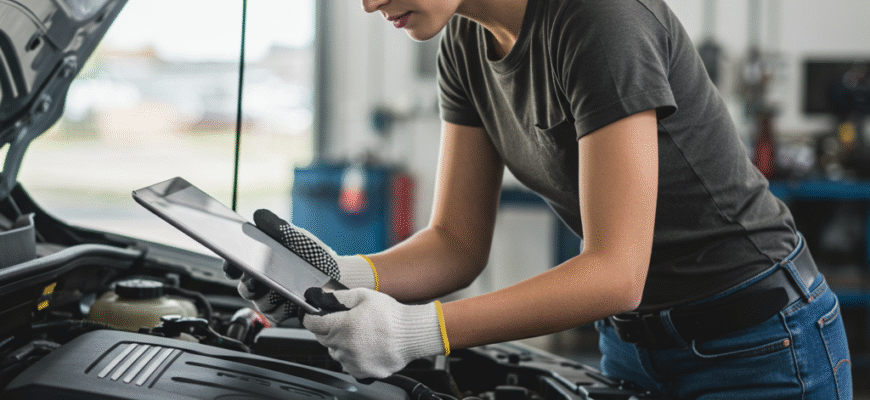Content
Unlocking Car Care Mysteries Visually
The beauty of video tutorials lies in their visual and practical nature. You can pause, rewind, and rewatch sections as many times as needed until you feel confident. Need to see exactly how that clip unfastens on the air filter housing? Pause. Rewind. Watch again. This self-paced learning removes the pressure you might feel if someone were physically showing you. It allows you to absorb the information comfortably and accurately. Many creators also offer different camera angles, close-ups on crucial steps, and point out common mistakes to avoid, adding layers of understanding that text alone often can’t provide.Starting with the Essentials: Fluid Checks
One of the easiest and most crucial areas to learn via video is checking your car’s vital fluids. Think of these as your car’s lifeblood. Online tutorials excel at showing you:- Engine Oil: Locating the dipstick (often brightly colored), the correct procedure for checking the level (engine warm or cold? consult the video/manual!), understanding the markings (min/max lines), and even identifying the oil filler cap if you need to top it up. Videos often show the color and consistency of healthy oil versus old, dirty oil.
- Coolant (Antifreeze): Finding the coolant reservoir (usually a translucent tank with min/max markings), checking the level safely (never open the radiator cap when the engine is hot!), and understanding the importance of using the correct type of coolant for your vehicle.
- Windshield Washer Fluid: This is typically the simplest check. Videos quickly show you where the reservoir is (often marked with a windshield/wiper symbol) and how to top it off. While basic, running out when you need it is frustrating and can be unsafe.
- Brake Fluid: Tutorials demonstrate locating the brake fluid reservoir (usually smaller, near the back of the engine bay) and checking the level against the markings. They often emphasize the importance of clean brake fluid and noting its color.
- Power Steering Fluid (if applicable): Similar to other fluids, videos guide you to the reservoir and explain how to check the level, sometimes involving specific conditions like the engine running or turning the steering wheel.
Tires: Your Critical Link
Your tires are the only part of your car actually touching the road, making their maintenance vital for safety and performance. Videos are fantastic for learning:- Tire Pressure Check: Demonstrating how to use a tire pressure gauge (digital or analog), finding the correct pressure for your car (usually on a sticker in the driver’s side doorjamb, not on the tire sidewall!), and checking pressure when tires are cold for accuracy.
- Tire Inflation: Showing how to use an air compressor at a gas station or a portable inflator, connecting it to the valve stem, and adding air to the correct PSI.
- Tire Tread Depth Check: Visual guides on using a tread depth gauge or simple tricks like the penny test (though a gauge is more accurate) to determine if your tires have sufficient tread left or are nearing replacement time.
Keeping Your View Clear: Wipers and Lights
Visibility is paramount for safe driving. Online videos make it easy to learn how to:- Replace Wiper Blades: This task often seems tricky, but videos break it down. They show how to identify your wiper arm type (hook, pin, bayonet), how to release the old blade (often involving a small tab or button), and how to securely attach the new one. Seeing the mechanism makes all the difference.
- Check Exterior Lights: A simple walk-around check. Videos remind you to test headlights (low and high beam), taillights, brake lights (you might need a helper or reflective surface), and turn signals. While seemingly basic, knowing how to systematically check ensures you don’t miss a burnt-out bulb, which could lead to a ticket or accident. Some videos might even cover basic bulb replacement for common types, though this varies in difficulty by car model.
Air Filters for Engine and Cabin
Your car needs to breathe clean air, and so do you! Videos simplify replacing filters:- Engine Air Filter: Tutorials show you how to locate the air filter housing (usually a large black box in the engine bay), release the clips or screws holding it shut, remove the old filter (and see how dirty it is!), insert the new one correctly (orientation matters!), and secure the housing.
- Cabin Air Filter: Often located behind the glove box, videos guide you through accessing it (which might involve releasing the glove box stops), sliding out the old filter, noting the airflow direction arrow, inserting the new filter, and reassembling everything. This can significantly improve the air quality inside your car.
Finding Reliable Video Sources
The sheer volume of online videos means quality varies. How do you find trustworthy guides? Look for channels run by certified mechanics, reputable auto parts retailers, or well-established automotive enthusiast communities. Pay attention to the production quality – clear visuals and audio are important. Read the comments section; often, viewers will point out helpful tips or discrepancies. Crucially, try to find videos specific to your car’s make, model, and year. While the principles are similar, exact locations and procedures can differ significantly between vehicles. Cross-referencing information between a couple of videos or with your owner’s manual is always a smart move.Safety First! Always prioritize safety when working on or around your vehicle, even for simple tasks. Ensure the car is parked on a level surface with the parking brake engaged. If checking fluids with the engine running is required (like some power steering checks), be extremely cautious of moving parts like belts and fans. Never place hands near these areas. Wear gloves to protect your skin from fluids and grime, and consider safety glasses, especially when working under the car or dealing with fluids under pressure.









